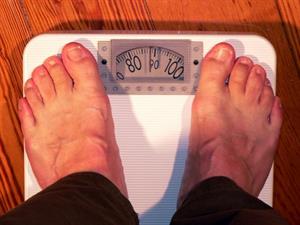
PUMPA - SMART LEARNING
எங்கள் ஆசிரியர்களுடன் 1-ஆன்-1 ஆலோசனை நேரத்தைப் பெறுங்கள். டாப்பர் ஆவதற்கு நாங்கள் பயிற்சி அளிப்போம்
Book Free DemoIn our daily life, we don't commonly use the word 'mass'. For example, we would not ask anyone what your mass is? Instead, we would ask, what is your weight?
\(\)
\(\)

So what is the difference between mass and weight?
Mass is the quantity of matter contained in an object or a body. It is considered as one of the fundamental quantity since all the objects in the universe contain mass. In contrast, weight is the gravitational force experienced by the mass of an object.
In one hand, hold a sheet of paper, and in the other, a book. The mass of the book exceeds the mass of a single sheet of paper. As a result, the book has a stronger pull than the paper. Hence, holding a book requires more force from the hand than holding a paper. This force is referred to as 'heaviness'.
Comparison of weight between Earth and Moon
The mass on the surface of the Earth is proportional to the weight. Therefore, the weight will decrease on the Moon, but the mass will remain the same. This is because the gravitational force on the Moon is lower than on Earth. The Moon's gravitational pull is one-sixth that of the Earth. As a result, objects on the Moon weigh six times lighter than on Earth.
Important!
The mass of an object is a constant value and does not vary by any change in gravity or place. Whereas the value of weight changes depending on the gravitational pull or location.
Units for mass
The SI unit of mass is \(kilogram\) (\(kg\)). Usually, for measuring mass, the units of a \(kilogram\) are preferred over the \(gram\) units. Heavyweights are measured in \(tonne\) or \(metric\ tonne\).
\(1\) \(gram\) \(g\) \(= 1000\) \(milligram\) \(mg\)
\(1\) \(kilogram\) \(kg\) \(= 1000\) \(gram\) \(g\)
\(1\) \(tonne\) \(= 1000\) \(kilogram\) \(kg\)
\(1\) \(tonne\) \(= 1000\) \(kilogram\) \(kg\)
A \(kilogram\) equal to the mass of a platinum-iridium alloy bar has been placed at the International Bureau of Weights and Measures in Sèvres, France, since \(1889\).
Mass measuring methods
Many things are measured in terms of ‘mass’ in the commercial world. Using the below instruments, we can determine the mass of an object.
Beam balance
Mass is measured using beam balances. The mass of an object is compared to that of a known mass called standard mass in beam balance.

Electronic balance
An electronic balance or digital balance is a tool for determining precise measurements of weight.

- Frequently used in laboratories to weigh chemical compounds to assure accurate measurements for various investigations.
- Food, other supermarket products, as well as jewellery can all be weighed using electronic balances.
Make your own beam balance:
One can make a beam balance using two coconut shells (scrapped ones), strings, thick cardboard as a frame and a sharpened pencil as an index needle. A detailed video is shown below.
Reference:
https://snappygoat.com/b/5f8be43a4cff5953fd713aa2eb5a425af5ad1ac8
https://cdn.pixabay.com/photo/2013/07/12/13/44/scales-147219_1280.png